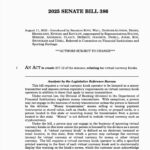XRP: Wall Street’s Dark Horse for Spot ETF Approval
When financial institutions launch exchange-traded funds (ETFs) for cryptocurrencies, it typically indicates that an asset is transitioning from niche markets to mainstream adoption. Currently, Bitcoin (BTC) and Ether (ETH) ETFs are already active in the US, attracting billions from both institutional and retail investors who prefer exposure without directly holding the tokens. The focus is now shifting towards XRP (XRP), the native digital asset of Ripple’s payments network.
At first glance, XRP might seem like an improbable contender. It has spent years engaged in legal battles with the US Securities and Exchange Commission (SEC) and lacks the cultural significance of Bitcoin and Ether. Nevertheless, prominent asset managers are submitting ETF applications, leaving analysts divided on how investors might respond. Nate Geraci, the head of The ETF Store and a keen observer of ETF markets, believes that skeptics are underestimating the demand for XRP. He likens the current skepticism to the initial resistance faced by Bitcoin and Ether ETFs, which quickly diminished as billions started to flow into those investments.
The Emergence of Spot XRP ETFs
The possibility of a spot XRP ETF is gaining attention as regulators process a wave of crypto fund applications. Currently, there are seven spot XRP ETF filings under SEC review, just behind Solana, which has eight such applications. Overall, there are 92 proposals related to crypto funds. The list of applicants includes major players in the industry. WisdomTree’s filing faced delays in August, while firms like 21Shares and Bitwise are submitting multiple amendments with deadlines approaching, raising expectations for an active decision-making season this autumn.
Alongside established managers like Grayscale, Franklin, and Canary Capital, newer entrants are innovating with more complex products, such as leveraged and derivative-based XRP exposure. Some issuers are even extending their strategies beyond simple price tracking; for instance, Amplify has suggested a fund that combines XRP exposure with covered call strategies to generate yield. This surge in applications and product innovation is capturing the attention of the broader Web3 community.
Key Upcoming Decisions for XRP ETFs
From October 18 to October 25, 2025, the SEC is set to make decisions on six significant spot XRP ETF applications. Moreover, Ripple’s application for a national bank charter, currently under review by the Office of the Comptroller of the Currency, is also anticipated to be resolved within the same October timeframe. If approved, Ripple would have the capability to operate as a federally supervised banking institution, paving the way for regulated payment services, custody, and offerings well beyond the realm of crypto.
The Significance of Concurrent Outcomes: ETF and Bank Charter
- Both ETF and bank charter approved: Analysts assert that approval on both fronts could institutionalize XRP, making it not only an investment option but also operationally critical, potentially driving substantial inflows, reliable liquidity, and a major shift in its financial narrative.
- Only one approved: Even the approval of either an ETF or a bank charter could generate momentum. ETFs would enhance XRP’s legitimacy as an investment, while a bank charter would bolster trust in its utility. However, each approval alone may not fully capitalize on the collective legitimacy they could jointly provide.
- Both rejected: A double setback would negatively impact market sentiment. Optimism would diminish, US adoption could stall, and XRP may revert to a speculative asset class until new regulatory avenues become available.
The argument for XRP as Wall Street’s dark horse is based on the perspective that demand is being largely underestimated. Nate Geraci insists that “people are severely underestimating investor demand for spot XRP and Sol ETF,” pointing out that early skepticism regarding Bitcoin and Ether funds quickly vanished once billions were invested. Market indicators support this viewpoint, as CME XRP futures have already surpassed $1 billion in open interest, marking the quickest growth of any crypto derivatives contract and demonstrating substantial institutional interest.
Predictions for ETF inflows further strengthen the argument. The CEO of Canary Capital estimates potential initial demand could reach as much as $5 billion, while JPMorgan analysts project nearly $8 billion annually if approval is granted. For perspective, investors have already allocated $380 million into XRP-related ETF-like products, indicating that capital is prepared to flow into this asset. Moreover, Amplify has submitted an ETF application designed to generate income through XRP options, opting for a yield-driven model rather than merely price tracking. Canary Capital further positions XRP alongside Bitcoin as one of the exceptional crypto assets that “resonates with Wall Street professionals.”



















